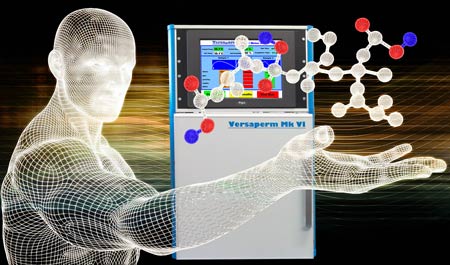

 Uses and Applications
Uses and Applications
Ionomers, a class of polymers containing ionic groups, are widely used in industries where moisture control, chemical resistance and mechanical durability are critical.
An ionomer is a type of polymer that contains a small proportion of ionised groups (typically carboxylic or sulfonic acid groups) distributed along its backbone. These ionic groups are neutralised with metal cations (e.g., sodium, zinc), forming ionic crosslinks between polymer chains. This structure gives ionomers a unique combination of mechanical strength, flexibility, and toughness.
Primary Characteristics of Ionomers:
The most well-known ionomer is Surlyn® by DuPont, often used in packaging and sporting goods.
 Applications of Ionomers
Applications of Ionomers
Vapour Permeability in Ionomers
Vapour permeability in ionomers is a significant factor, particularly because:
Problems with Vapour Permeability in Ionomers

Standards
Vapour permeability is a critical property in assessing how materials, including ionomers, allow moisture transmission. Several standardized test methods are employed to evaluate this characteristic, ensuring consistency and reliability across various applications. Key standards relevant to vapour permeability measurement include:
These standards provide structured methodologies for assessing vapour permeability, facilitating quality control and material selection in industries utilizing ionomers. Adherence to these standards ensures that materials meet specific performance criteria related to moisture transmission, which is vital for applications such as packaging, medical devices and coatings.
Ionomers vs Other Polymers
Ionomers are exceptionally good at sealing through contamination compared to many other plastics. This is due to their:
In contrast, common sealing materials like polyethylene may require cleaner surfaces to form reliable seals.
Comparison of Ionomers to other Barrier Materials
Material |
Water Vapour Barrier |
Oxygen Barrier |
Sealability |
Seals Through Contamination |
Mechanical Strength |
Clarity |
Typical Uses |
Ionomer (e.g. Surlyn®) |
◼◼◼○○ |
◼◼◼○○ |
◼◼◼◼◼ (excellent) |
◼◼◼◼◼ |
◼◼◼◼○ |
◼◼◼◼◼ |
Food packaging, golf balls, medical films |
LDPE (Low-Density Polyethylene) |
◼◼◼◼○ |
◼◼○○○ |
◼◼◼◼○ |
◼◼○○○ |
◼◼◼◼○ |
◼◼◼◼○ |
Basic food packaging, film wrap |
EVOH (Ethylene Vinyl Alcohol) |
◼◼◼◼◼ |
◼◼◼◼◼ (very high) |
◼◼○○○ |
◼○○○○ |
◼◼◼○○ |
◼◼◼◼○ |
High-barrier multilayer films, medical packaging |
PET (Polyester) |
◼◼◼◼○ |
◼◼◼◼○ |
◼◼◼○○ |
◼◼○○○ |
◼◼◼◼◼ |
◼◼◼◼◼ |
Bottles, trays, flexible packaging |
Aluminium Foil |
◼◼◼◼◼ (impermeable) |
◼◼◼◼◼ |
◼◼○○○ |
◼○○○○ |
◼◼◼◼◼ |
○○○○○ (opaque) |
Pharmaceuticals, long-life food, military rations |
PVDC (Polyvinylidene Chloride) |
◼◼◼◼◼ |
◼◼◼◼◼ |
◼◼◼◼○ |
◼◼◼○○ |
◼◼◼◼○ |
◼◼◼◼○ |
Meat packaging, twist wraps, blister packs |
Squares imply excelenct water vapour permeability - with 5 being the maximum, circles imply low vapour permeability
Conclusion
Vapour permeability is a critical factor in the performance of ionomer-based products across numerous industries. Achieving the right balance is essential to ensure durability, efficiency and regulatory compliance. Whether in packaging, medical applications, or energy storage, controlling moisture transmission can prevent degradation, improve longevity and enhance overall functionality. Understanding and measuring vapour permeability with precision allows manufacturers to optimize ionomer formulations for specific applications, reducing failures and improving product performance.